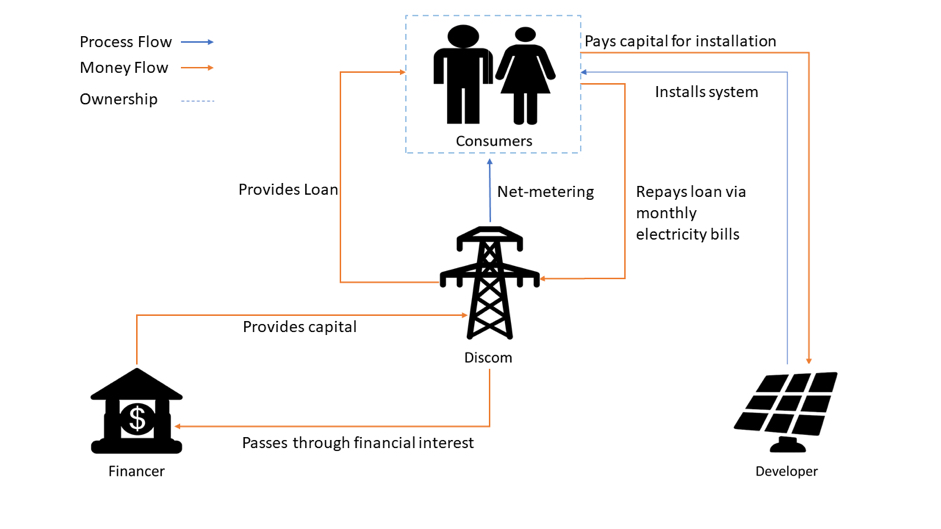In on-bill loan financing model, the consumers are provided with the capital required for the solar rooftop system as a loan by the discom.

Benefits to discoms
- Higher adoption of rooftop solar by consumers in the lower consumption slabs can lead to reduced cross-subsidy burden for the discoms.
Benefits to consumers
- Consumers who did not have access to cheap credit are able to install systems under the model.
- Aggregated procurement by the discom can ensure better quality of installation.
Benefits to developers
- Developers get access to new customer segments who could not afford rooftop solar system otherwise.
- Identification and aggregation of consumers by the discoms leads to reduced customer acquisition and business development costs for the developers.
Source : Utility-centric Business Models for Rooftop Solar Models (USAID, 2008)
-
Target Consumer SegmentConsumers with exclusive roof access and cannot bear the upfront cost of solar system installation
-
LocationConsumer rooftops
-
Asset OwnershipCosumer
-
Metering ArrangementNet-metering
-
Role of DiscomFinancing, aggregated procurement
-
Level of involvement by utilityLow
-
Need for partnershipsHigh
-
Revenue to DISCOMLow
-
Skill RequirementLow
-
Risk to UtilityHigh
